

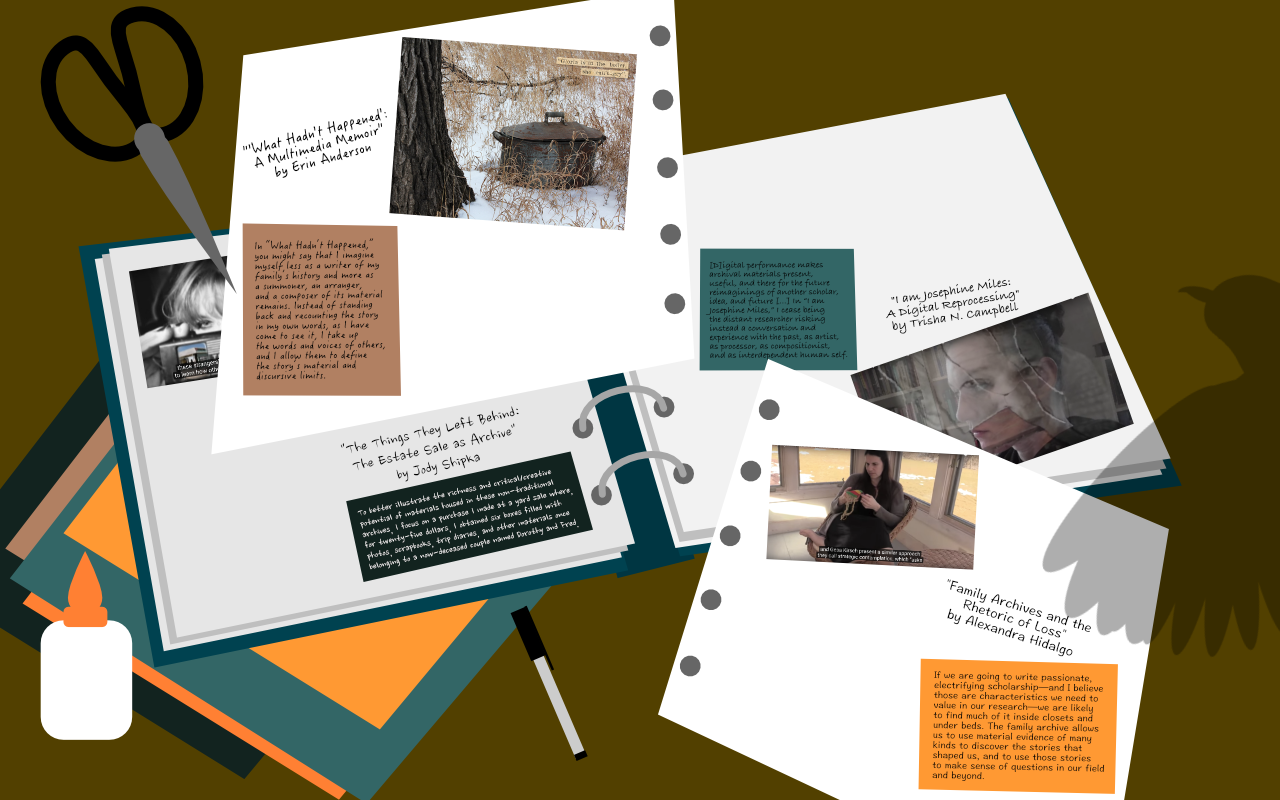



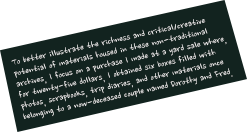
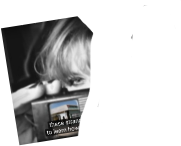

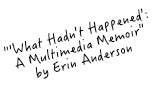
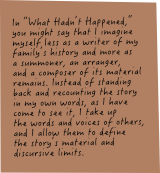



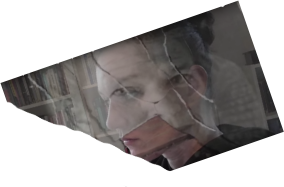



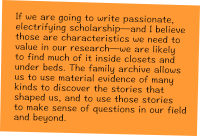
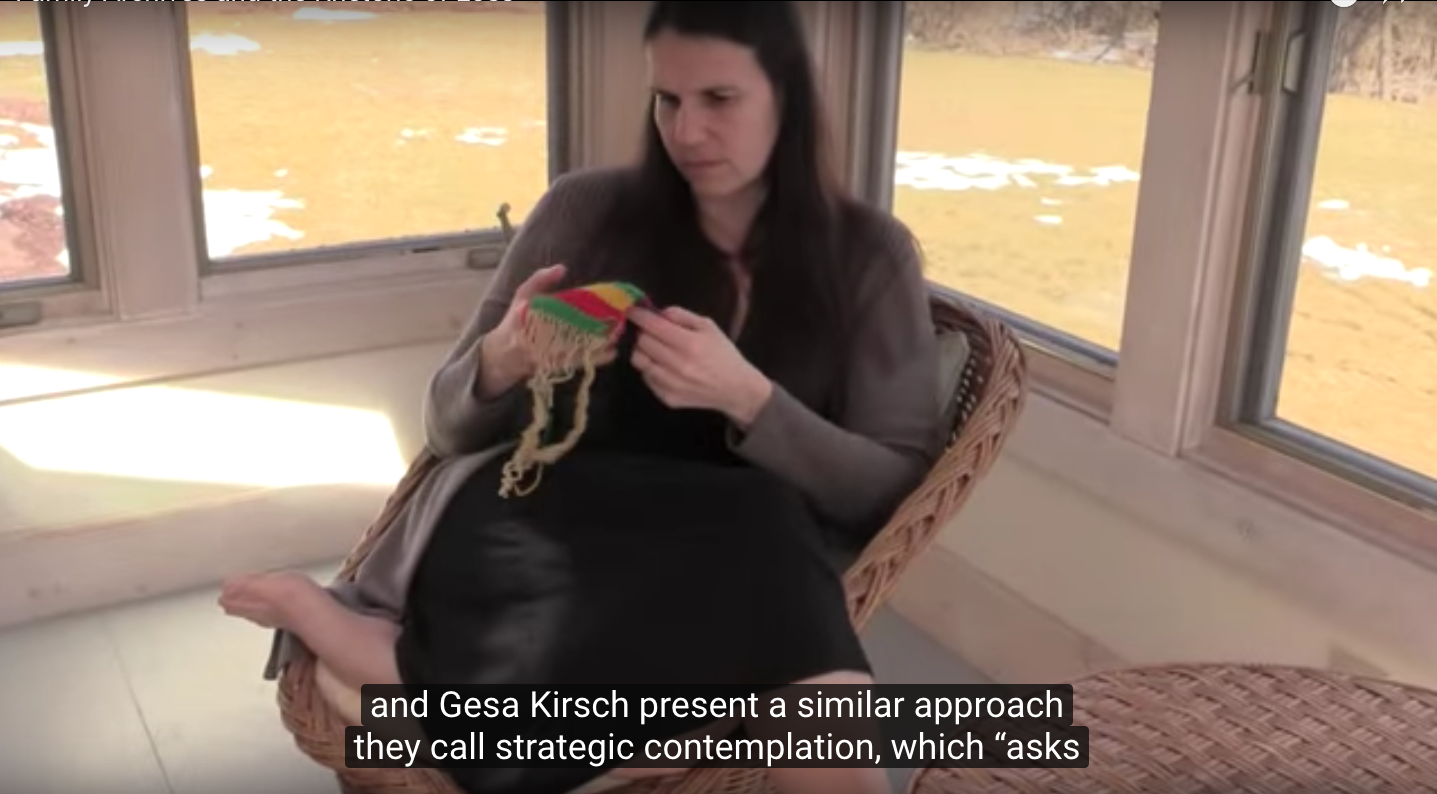

Provocations: Reconstructing the Archive is the first work in a new Computers and Composition Digital Press series that features “experimental genres, fruitful and unusual collaborations, and/or mediated, born-digital formats” (Abstract). Like Rhodes and Alexander, the four authors of the digital essays collected in Reconstructing the Archive explore deeply personal stories of everyday life, family histories, and inspirational individuals through creative digital responses to meaningful objects. However, these four authors engage their stories not to examine constructs of subjectivity, but rather to examine, theorize, and perform how the self can be a lens through which to make sense of the lives, memories, and material artifacts of other individuals’ archived stories. The collection is framed by a foreword from Jonathan Alexander, an introduction by Paul Prior, and a response by Gisa Kirsch. Each of the multimodal essays is additionally contextualized by an alphabetic introduction from each author discussing her central goals and informing theoretical frameworks in creating the piece.
In her video essay, Shipka enacts a way of making “history from below” (2:00) through investigating objects found at flea markets and antique stores. She focuses in particular on a series of scrapbooks purchased at an estate sale that document the life of a couple named Dorothy and Fred—materials that the family had intended to share with the local historical society, but for which this more traditional archival system could find no room. Shipka examines these scrapbooks as creative multimodal compositions documenting vernacular literacies and invites others to “inhabit” this archival material along with her by offering their own recreations and interpretations of these “traces of lives led” (13:25).
Hidalgo’s video essay theorizes a “rhetoric of loss” through her search for an understanding of her father, who disappeared over thirty years ago, among her family members’ artifacts and memories. By tracking down her father’s possessions and incorporating them into her family’s everyday life, she enacts a “rhetorical performance of loss” (13:27) through juxtaposing his belongings with “objects that tell the parts of my own story that are separate from his” (13:16). Her essay doubles as a methodological project that argues for the value of incorporating family stories into scholarly research and models a set of suggested practices for accomplishing that work.
Anderson’s multimedia memoir tells a story of a tragedy in her family and its impact across multiple generations in conversation with remixed photos, maps, recorded interviews, and newspaper clippings. Seeing herself as an “arranger” rather than a “writer” of family history, she lets the materials themselves shape and limit her narrative, noting the gaps and silences of voices unable to speak, in enacting an “approach to storytelling as inquiry and as ethical performance” (Artist’s Statement).
Campbell’s project perhaps most literally envisions the concept of the self as a performative medium for recreating stories of the past. In her video essay, she takes on the persona of Josephine Miles (d. 1985), a compositionist and poet, in the hopes of bringing her methods and disposition “back to life” for the discipline (Abstract). Voicing Miles’s own desire to let the past speak through her without mapping on her own self (6:20), she reprocesses (0:35) this historical figure by remediating Miles’s stories and ideas through her own face, voice, and handwriting, as well as transposing them to contemporary media channels such as social media accounts.
Each of these four authors’ beautifully crafted work with video, image, and audio files connects well to their overlapping focuses on the importance of material artifacts, enabling them to bring these objects to vivid life in their scholarship (and in turn to show how these material artifacts themselves have shaped the directions of their scholarship). The authors additionally each address ethical concerns regarding the self as a medium for past voices: how to honor these materials in remediating them? How to tread delicately in working through deeply personal family stories and materials? How to give voice to past figures without utterly taking them over? At the same time, noting Kirsch’s critique in her response to the collection, it would also be interesting to comparatively investigate the ethics behind their varying subject choices: what are the differences between inhabiting the stories of family members, admired public figures, and total strangers? What stories are uninhabitable, by whom, and to what extent? Considering the researcher as narrative channel, both observer and invested participant, what might be some best practices for setting boundaries in order to protect everyone with a stake in the story’s telling?